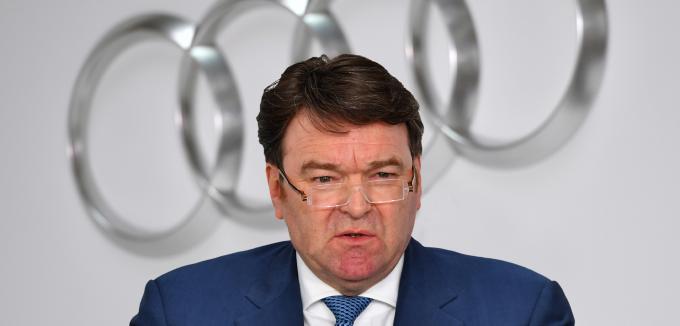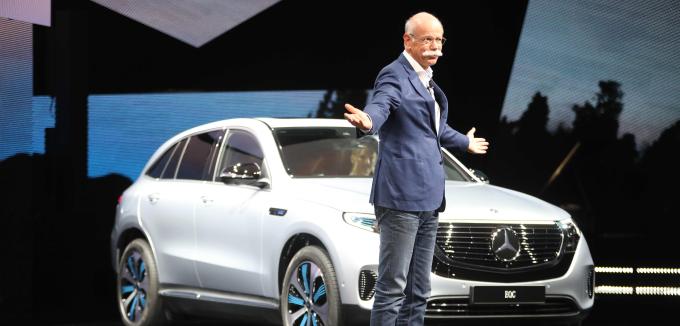Electric Cars
Electric Car Benefits
Electric Car Sales
Solar Energy Rocks
RSS
Advertise
Privacy Policy
Batteries
Published on December 10th, 2018 |
by Kyle Field
Tesla’s Jerome Guillen Talks Gigafactory 1 & Working For Elon With 60 Minutes
Twitter
Google+
LinkedIn
Pinterest
Facebook
December 10th, 2018 by Kyle Field
60 Minutes spent some time with Tesla’s leadership over the last few weeks, including a sit-down with Tesla President of Automotive, Jerome Guillen, at Tesla’s Gigafactory 1 in Sparks, Nevada. The lighthearted interview touches on the current state of the Gigafactory and gets into what it’s like to work directly with Elon Musk. This perspective comes from someone who has been a clutch player on the Tesla team for the last 8 years.
Engineering Fundamentals
Jerome Guillen isn’t your typical business leader. Much like Elon Musk, he built up his own core competency in hardcore engineering, holding a doctoral degree in engineering from the University of Michigan. Before coming to Tesla, Jerome cut his teeth at Daimler subsidiary Freightliner before stepping up to lead central projects at Daimler, like the launch of its carsharing service, car2go.
Since joining Tesla, Jerome has led the Model S program, led the Tesla Service program, led the Tesla Semi program, and most recently, led the Model 3 program, including the establishment of the General Assembly 4 line — also known as the line in the tent.
I Dream In Giga
As anyone familiar with the company knows, the core of Tesla’s business is batteries. The company does happen to sell batteries in some sexy packages, like automobiles and cutting edge stationary energy storage products, but no joy can be had without thousands millions billions of lithium-ion batteries being produced first. Tesla has taken its battery business to the next level with Gigafactory 1, which Jerome shared already builds more batteries than the rest of the world combined. What’s mind blowing about that is that Gigafactory 1 as it stands today is only 30% complete.
That hurts my brain, but means that Tesla has plenty of room to grow at Gigafactory 1. The factory churns out gigawatt-hours of batteries thanks to endless hours of work put in by the 7,000 employees there and a few hundred robots. The video of the interview with Jerome shows some of Tesla’s battery cell conveyors that move the individual cells around in their own little conveyor carts. The segments remind me of minecarts from Minecraft.
The mainstream media focused its coverage on the Model 3 production ramp because that’s where the more visually exciting elements of the Model 3 are built, assembled, painted, and the like, but an equal amount of effort went into expanding and improving operations at Gigafactory 1.
Gigafactory 1 is where every 2170 battery cell that went into a Model 3 was put together. They also bundle up those cells into the battery modules and battery packs that power each car. The Gigafactory is the unsung hero in the Model 3 production ramp and it is clear that it will continue to be the backbone for Tesla’s projects moving forward, particularly since its Fremont, California, automobile factory is approaching or at full capacity.
Jerome said that the Gigafactory was a key component of Tesla’s strategy, since building everything in a single factory is seen as critical in lowering the cost of production as the company pushes for increasingly more affordable electric vehicles.
Working With Elon
Jerome also touched on his relationship with Elon in the interview, noting that Elon was not alone in asking for the impossible from his team during the Model 3 production ramp. Jerome was also pushing the team. That included long hours for Jerome, but no sleeping at the factory for him. While at the Gigafactory, Elon actually slept on the roof of the facility. Jerome said that the views up there are amazing but that “it gets a little cold at night,” with a laugh.
Keeping with the spirit of the 60 Minutes interview with Elon, she asked if Elon was just there as a cheerleader. The question speaks to either her lack of background prep on Elon or a desire to poke and prod at the raw edges just to provoke a response that might earn some headlines. Either way, it’s awkward, but Jerome said Elon is a leader and that he never seems to stop pushing:
“It’s always at the limit of the comfort zone. This is what it takes. What we’re trying to do is very difficult and it’s not going to happen just by cruising. There’s a lot of innovation, a lot of technology, and we are doing this to make the vehicle less expensive so more people can afford them and more people can drive electric,” Jerome said.
He closes by reinforcing the reason Tesla exists. They are doing all of this to make electric vehicles more affordable so more people can drive electric. It is so different than the way any other company operates and yet it just makes so much sense. We need revolutionary products and solutions and that’s what Tesla is bringing to market, but it requires painstaking, difficult, world-changing work. At the end of the day, Jerome is still able to smile and seems to enjoy doing what he’s doing at Tesla.
Source: 60 Minutes via Reddit
Related Stories:
The Curious Case of Jerome Guillen, Tesla Semi Trucks, & Nikola One
“The Fixer” — Tesla’s New President
Tesla President Jerome Guillen Lays Out Path Forward For Gigafactory 1
Support CleanTechnica’s work by becoming a Member, Supporter, or Ambassador.
Or you can buy a cool t-shirt, cup, baby outfit, bag, or hoodie or make a one-time donation on PayPal to support CleanTechnica’s work.
About the Author
Kyle Field I'm a tech geek passionately in search of actionable ways to reduce the negative impact my life has on the planet, save money and reduce stress. Live intentionally, make conscious decisions, love more, act responsibly, play. The more you know, the less you need. TSLA investor. Tesla referral code: http://ts.la/kyle623
Back to Top ↑
Advertisement
Advertise with CleanTechnica to get your company in front of our readers.
CleanTechnica Clothing & Cups
Top News On CleanTechnica
Advertisement
Follow @cleantechnica
Join CleanTechnica Today!
EV Charging Guidelines for Cities
Share our free report on EV charging guidelines for cities, “Electric Vehicle Charging Infrastructure: Guidelines For Cities.”
Advertisement
Cleantech Press Releases
New Research Shows That Only Two Large Petroleum Companies Have Meaningful Emission Reduction Targets
Koben Announces EVOLVE EVSF —Grid-Friendly Modular EV Store & Forward System
The New Danish Climate Plan — Together For A Greener Future
The EV Safety Advantage
Read & share our free report on EV safety, “The EV Safety Advantage.”
The State of EV Charging
Our 93-Page EV Driver Report
30 Electric Car Benefits
Blockchain × Cleantech
Our Electric Vehicle Reviews
Tesla News
Correcting the Cleantech Record
38 Anti-Cleantech Myths
Wind & Solar Prices Beat Fossils
Cost of Solar Panels Collapses
© 2018 Sustainable Enterprises Media, Inc.
Electric Cars
Electric Car Benefits
Electric Car Sales
Solar Energy Rocks
RSS
Advertise
Privacy Policy
This site uses cookies: Find out more.Okay, thanks

